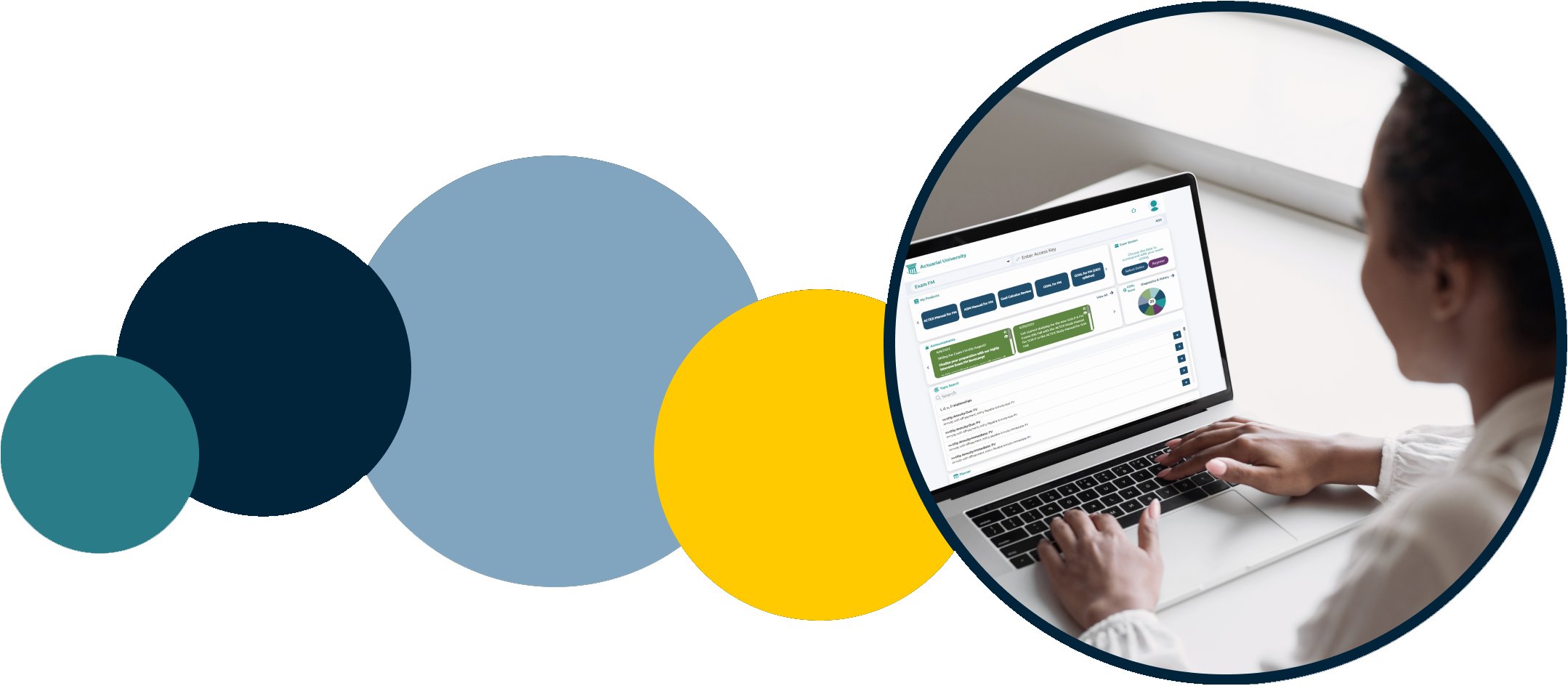Why Data Science is Revolutionizing Insurance — And What It Means For Actuaries
Written by Yuanyuan Zhang. Edited by Nardine Andrawos.
Introduction
Big data and advanced analytics are quickly transforming the insurance industry. For actuaries, leveraging data science techniques can enhance customer behavior analysis, leading to more accurate risk assessments. These tools also improve claims data processing for fraud detection and help identify seasonal trends to optimize pricing models. As data science becomes a core component of actuarial work, mastering key techniques is essential to stay competitive in the field.
Why Data Science Matters for Actuaries
Traditionally, actuaries have relied on statistical models and historical data to predict future risks. However, with the advent of machine learning, artificial intelligence, and cloud computing, actuaries now have access to more powerful tools that improve predictive accuracy and efficiency. From underwriting to claims management, data science is revolutionizing how actuaries assess and mitigate risk.
Apart from improving predictions, it also enables actuaries to handle large datasets, automate processes, and extract more profound insights into policyholder behavior. With advancements in computational power and access to vast amounts of real-time data, actuaries who embrace data science can make more informed decisions and provide insurers with a competitive advantage.
Let’s explore some of the most critical data science techniques every actuary should know and how they apply to insurance.
Data Cleaning and Preprocessing: The Foundation of Reliable Models
Insurance companies collect vast data on policyholders, claims, and market trends. However, raw data is often incomplete, inconsistent, or contains errors. Before analysis can begin, data must be cleaned and preprocessed to ensure accuracy and reliability. This step is crucial because even the most advanced predictive models will fail if built on poor-quality data.
The cleaning process should be as follows:
- Handling missing values in claims and policyholder records to prevent biased models.
- Normalizing and standardizing data to ensure consistency in premium calculations and risk assessments.
- Using feature engineering to create new variables from existing insurance data to improve model performance.
- Detecting outliers to identify fraudulent claims or abnormal policyholder behaviors.
A well-prepared dataset leads to more accurate predictions and better decision-making in insurance pricing and claims forecasting.
Predictive Modeling: Enhancing Risk Assessment and Pricing
Predictive modeling is crucial in insurance, as it estimates risks, sets premiums, and optimizes underwriting strategies. The accuracy of these models determines the profitability and competitiveness of insurance products. By leveraging predictive analytics, actuaries can develop more precise models that reduce uncertainty and enable better financial planning.
Here are some models and analyses and their usage in different insurance stages:
| Models & Analyses | Usage |
|---|---|
| Generalized linear models | - Modeling Insurance claims - Setting Pricing Strategies |
| Decision Trees & Random Forests | - Classification of Policyholder Risk - Detecting Fraudulent Claims |
|
Gradient Boosting Machines XGBoost |
Enhancing Predictive Accuracy for Customer Segmentation and Claims Management |
| Survival Analysis | Predicting policyholder events over time, especially in life insurance and pension planning |
By incorporating these models, actuaries can better assess policyholder risks and develop more competitive insurance products.
Machine Learning: Powering Next-Generation Actuarial Analysis
Machine learning extends traditional actuarial models, helping insurers to identify hidden patterns and make data-driven decisions in real time. Unlike conventional statistical models, machine learning can adapt to new data, improving over time and providing more dynamic insights into risk assessment and fraud detection.
Here are some machine learning techniques and their insurance applications:
| Machine Learning Techniques | Application |
|---|---|
| Supervised learning techniques: - Regression - Classification |
- Premium Calculations - Loss Predictions |
| Unsupervised learning methods: - Clustering |
- Customer Segmentation - Behavioral Analysis |
| Neural Networks | - Detecting Fraudulent Claims - Improving Customer Risk Assessment |
| Natural Language Processing - Analyzing unstructured data from claim descriptions, customer reviews, and social media. |
- Predicting policyholder events over time especially in life insurance and pension planning. |
By integrating machine learning, actuaries can enhance underwriting accuracy and automate repetitive risk assessments.
Time Series Analysis: Forecasting Trends in Claims and Premiums
Time series analysis is essential for predicting financial trends and understanding policyholder behavior over time. Insurance companies rely on historical data to accurately forecast future claims, policy lapses, and premium collection trends. Understanding time series techniques enables actuaries to develop models that improve financial planning and operational efficiency.
Here are a few time series techniques and where they work best:
| Time Series Techniques | Application |
|---|---|
| ARIMA | - Modeling & Forecasting Time Series Data - Predicting Claims Frequency, Loss Ratios, Claims Payment Trends, particularly data with seasonal patterns or long-term trends. |
|
Exponential Smoothing |
- Short-Term Premium Revenue trends - Managing Cash Flow - Analyzing Policyholder Behavior Patterns. |
|
Long Short-Term Memory (LSTM) networks |
Forecasting long-term policy renewal probabilities & trends in life and health insurance claims, and customer retention rates by analyzing behavioral data over time. |
These models help actuaries predict future claim patterns, enabling insurers to allocate reserves more efficiently.
Data Visualization: Communicating Insights Effectively
Data visualization is crucial for translating complex actuarial models into clear, actionable insights. In a field where stakeholders rely on data-driven decision-making, the ability to present findings in an intuitive and visually appealing manner is a valuable skill.
- Tableau and Power BI enable the creation of interactive insurance dashboards for real-time decision-making.
- Python libraries such as Matplotlib and Seaborn support the development of detailed statistical graphs.
- ggplot2 is a robust visualization tool for R users in actuarial analysis.
By presenting data visually, actuaries can effectively communicate risk assessments and financial forecasts to stakeholders.
Big Data and Cloud Computing: Scaling Actuarial Models
As insurers process increasingly large datasets, cloud computing, and big data tools become indispensable. The ability to store, process, and analyze vast amounts of structured and unstructured data is transforming the insurance landscape, allowing actuaries to work more efficiently and deliver deeper insights.
Here are some tools that are used in analyzing big data:
| Big Data Tools | Application |
|---|---|
| SQL Databases | Managing structured and unstructured insurance data. |
|
Apache Spark Hadoop |
Facilitating efficient processing of massive claims and customer information. |
| Cloud Platforms such as AWS, GCP, & Azure | Providing scalable computing power for predictive analytics. |
Cloud technology enables actuaries to run complex models in real time, improving efficiency and accuracy.
Future Trends in Actuarial Data Science
The role of actuaries is continuously evolving with advancements in technology. Emerging trends will reshape how insurers assess risk and make decisions. Actuaries who stay ahead of these trends will be in a strong position to drive innovation and improve the efficiency of insurance operations.
- Artificial intelligence is automating risk assessment and pricing strategies.
- Blockchain and smart contracts enhance transparency in policy administration and claims processing.
- The Internet of Things and telematics allow insurers to use connected devices for real-time risk assessment in auto and health insurance.
- Quantum computing has the potential to revolutionize actuarial calculations with unparalleled processing power.
Final Thoughts: Embracing Data Science in Actuarial Practice
Integrating data science into actuarial work is no longer optional—it is essential. By mastering these techniques, actuaries can refine risk models, enhance predictive accuracy, and create more efficient insurance solutions.
As the industry evolves, those who effectively leverage data science will drive the future of actuarial science and insurance innovation. Now is the time to embrace these advancements and transform risk assessment and management. Actuaries who adopt data science will be in charge of building more innovative, resilient insurance models.


